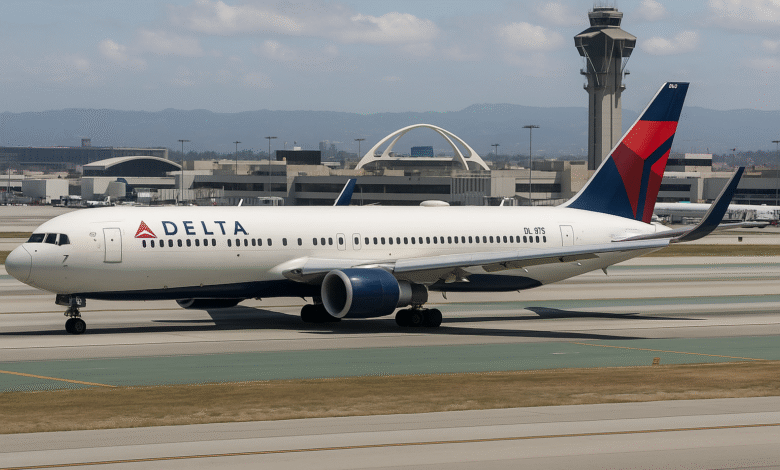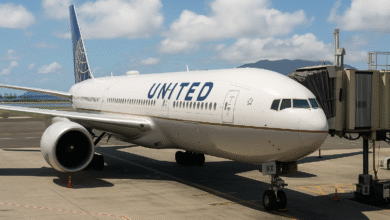Delta Flight DL275 Diverted LAX: Full Story, Causes, and Latest Passenger Updates

The Unexpected Announcement
Delta Flight DL275 departed Detroit bound for Tokyo Haneda, but midway through the Pacific crossing, the crew made an announcement nobody expected: they were diverting to LAX. Murmurs of concern rippled through the cabin, but the seriousness in the pilot’s voice made it clear this was no minor hiccup. Passengers settled in for an uncertain turn in their journey—what had started as a routine long-haul trip had suddenly become an aviation drama.
Why Do Flights Get Diverted?
Flight diversions are rare, yet they happen for logical reasons—usually prioritizing safety over schedule. Common triggers include medical emergencies, technical malfunctions, weather challenges, or operational constraints like crew duty limits or airspace congestion. In the case of DL275, early coverage points to a technical failure—specifically, in the engine’s anti-ice system—though some reports still consider a possible onboard medical issue as a contender.
The Precise Trigger: Anti-Ice System Failure
A few sources converge on one cause: a failure in the Rolls-Royce Trent XWB engine’s anti-ice system. This system prevents ice buildup on critical engine components; its malfunction is serious enough to make crossing the remote Pacific unsafe. Once pilots detected the issue, they swiftly decided to redirect to Los Angeles—not only to land safely, but also to access the specialized maintenance support available there.
But Why LAX, Not Anchorage or Seattle?
You might think Anchorage or Seattle would have been closer or easier choices—but flight diversions aren’t strictly about geography. LAX is a major Delta hub with comprehensive support: extensive maintenance facilities for complex aircraft like the A350, spare parts, and Airbus/engine experts on hand. The runway infrastructure, operational workforce, and onward connections make it a very logical landing spot, even if it’s not the nearest.
How the Crew Handled It
Inside the cabin, tension was palpable. But the crew focused on clear, calm communication, updating passengers honestly and showing steady professionalism. Pilots announced the diversion concisely, flight attendants offered constant reassurance, and passengers later praised their steady presence under pressure. It wasn’t perfect, but the human touch made a tough moment manageable.
A Timeline of the Diversion
- Departure: Flight DL275 leaves Detroit heading for Tokyo.
- Issue Detected: Around five hours in, the anti-ice system failure triggers caution.
- Decision: Pilots decide to reroute to LAX.
- Flight Shift: The aircraft turns and heads towards the west coast.
- Landing: It touches down safely at LAX, with emergency teams on standby.
This timeline underscores that no drama unfolded in haste—every step was measured to prioritize passenger safety.
Passenger Reactions & Emotions
Passengers went through a rollercoaster: confusion gave way to nervousness, but relief came with the smooth landing. Many described how the flight crew’s communication helped diffuse fear. Some even applauded upon touchdown, a spontaneous reaction to the collaborative effort that kept everyone safe. A few people shared their appreciation afterward for how the situation was managed with competence and care.
Delta’s Response on the Ground
Once the plane landed, Delta’s ground teams swung into action. Passengers received assistance with connecting flights, accommodations, and refreshments as needed. Staff helped with rebooking, ensured sleeping arrangements for anyone stranded overnight, and coordinated onward travel—softening the blow of an unexpected interruption.
Media Coverage & Broader Reaction
News outlets and aviation blogs quickly picked up on the incident. Headlines emphasized safety-first decision-making and praised Delta’s handling. Social media featured posts from concerned family members and aviation watchers tracking the diversion. In forums, one user noted how unusual it was for a Tokyo-Detroit flight to detour all the way to LAX rather than a closer airport—but reasoned LAX’s capabilities likely explained the choice.
What Does This Mean for Aviation?
This incident is a textbook example of aviation’s layered safety net in action: pilots trained to assess risks, strong support infrastructure at major hubs, and clear coordination between air and ground. Diversions like DL275’s remind us that when mechanical issues arise mid-air, the system kicks into gear—not for convenience, but for security.
Passenger Tips for Future Travelers
If your flight happens to be diverted, here’s what savvy travelers can do:
- Stay calm—most diversions are handled smoothly and professionally.
- Follow crew guidance—they’re trained for these moments.
- Ask about accommodations or meals—airlines often provide them for delays within their control.
- Allow buffer time for connections—especially when traveling across time zones or on tight schedules.
- Consider travel insurance—it can offer peace of mind and financial backup.
Final Words: Safety Over Schedule
Delta Flight DL275’s diversion to LAX wasn’t a story of chaos—it was a story of safety in motion. A technical glitch did interrupt schedules, disrupted travel plans, and incurred operational costs; but the safe safe landing affirmed that human lives—and caution—always take priority. For the passengers, it was an unplanned detour. For the industry, it was a reaffirmation of the systems, training, and infrastructure that make air travel exceptional at keeping us safe—even when the unexpected shows up.
